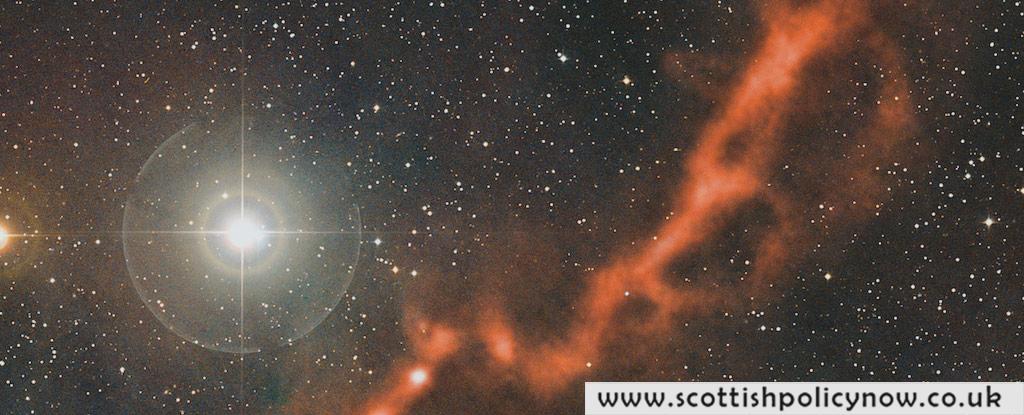While specifics are understandably scant, life on Earth is believed to have emerged around 4 billion years ago from a fortunate mix of organic compounds commonly referred to as primordial soup.
The exact methods and locations of how these proto-biological ingredients were concocted remain topics of debate, considering the timeline and surface conditions of an early, cooling Earth.
Recent research highlights that essential materials like amino acids, lipids, and sugars could form in the depths of space, and might have been delivered to early Earth via meteorites and comets.

A recent study by a German and French team supports this scenario, suggesting it as the most likely explanation for how Earth acquired some life-building blocks that would have formed more efficiently in interstellar space.
This research zeroes in on the formation of peptides—short chains of between 2 and 50 amino acids connected by peptide bonds.
Peptides are crucial for life on Earth, performing a variety of functions such as catalyzing biological processes. They might have also been instrumental in forming the early precursors to cell membranes, the authors suggest.
However, the young Earth likely wasn’t the best environment for peptide formation, according to the researchers.
Water can complicate the formation of peptides from chemical ingredients, potentially obstructing this aspect of abiogenesis—the emergence of life from nonliving materials.
Surprisingly, a more favorable setting for peptide formation is the interstellar medium, the sparse material and radiation that exists in the vast expanses of space between star systems.
Led by Serge Krasnokutski, an astrophysicist at the Max Planck Institute for Astronomy in Germany, the study simulated interstellar medium conditions to experimentally investigate how Earth might have initially acquired peptides.
They verified that peptide synthesis relies on three chemical ingredients—carbon, carbon monoxide, and ammonia. These can initiate the formation of amino acid-like aminoketene molecules in low-density interstellar dust clouds.
As such molecular clouds condense, their dust particles start to cluster, allowing aminoketene molecules to form chains, or peptides.
This coagulation process in interstellar space aids in transforming a sparse molecular cloud into a denser protoplanetary disk, a debris ring around a star that eventually forms planets, moons, and other celestial bodies.
In these circumstellar disks, distant comets or asteroids from their star are particularly interesting for peptide formation, the researchers note.
When such an object nears a star and heats up, the evaporation of its internal molecules is mostly inhibited, allowing only surface layer molecules to evaporate.
Once the object reaches 176 Kelvin, ammonia in its molecular ice mixes with water, forming a substance with a lower melting point than its components. This liquid state, largely resistant to evaporation, is ideal for forming aminoketene molecules.
In this liquid state, molecules have more freedom to move, enabling a high concentration of ammonia molecules to act as catalysts.
Furthermore, the gradual warming of these celestial bodies supports peptide bond formation, as it allows more time for necessary chemical reactions.
This method might have been how peptides formed in our Solar System, eventually reaching Earth via meteorites, comets, and other objects carrying potential peptide cargo.
The arrival of peptides likely provided Earth with a vital component for life, aiding in the development of protomembranes—the precursors to cellular membranes.
Further research is essential to delve deeper into these findings and continue unraveling the mysteries of life’s origins, but this study provides strong support for the theory that extraterrestrial components were key in animating Earth’s primordial soup.
This research has been published in Science Advances.








